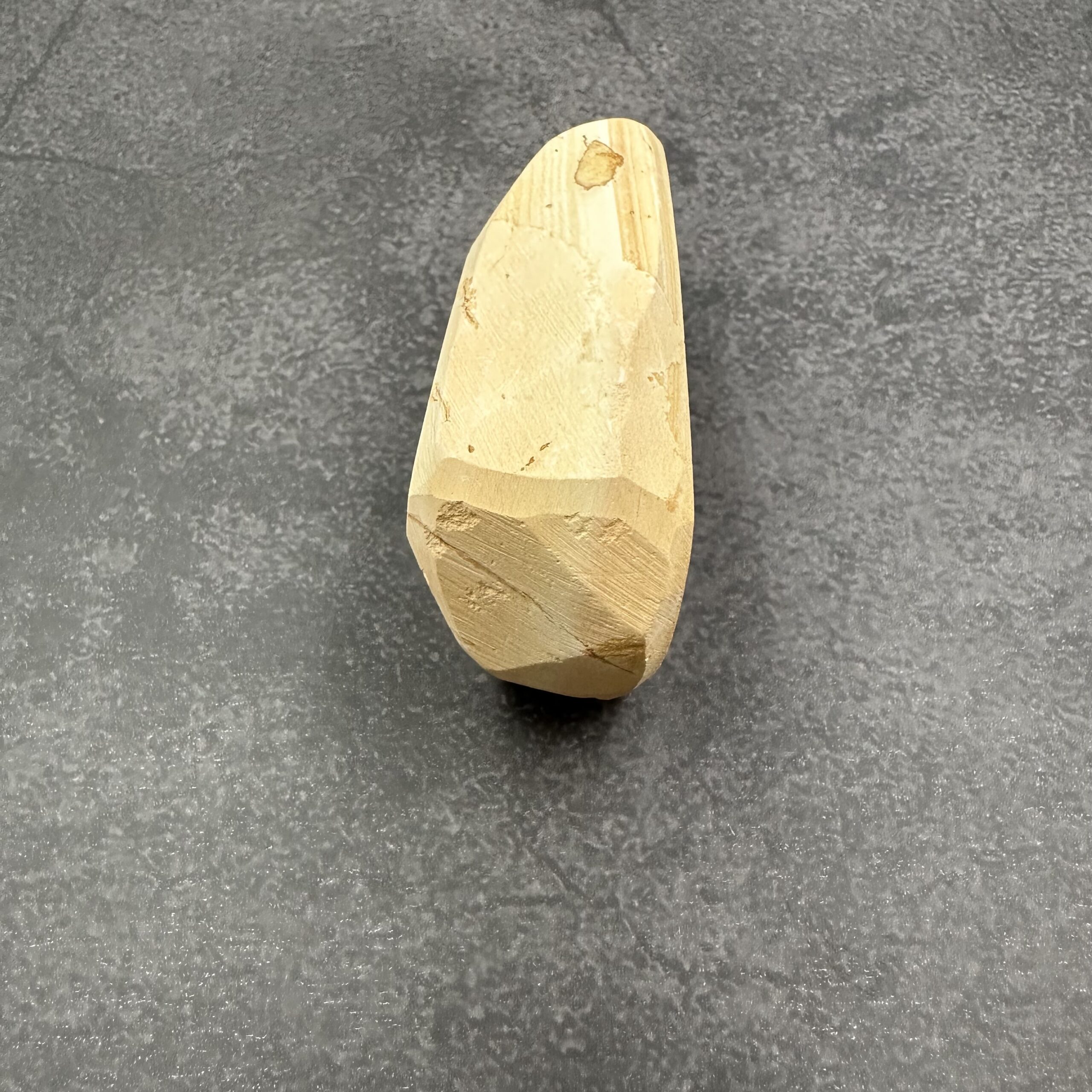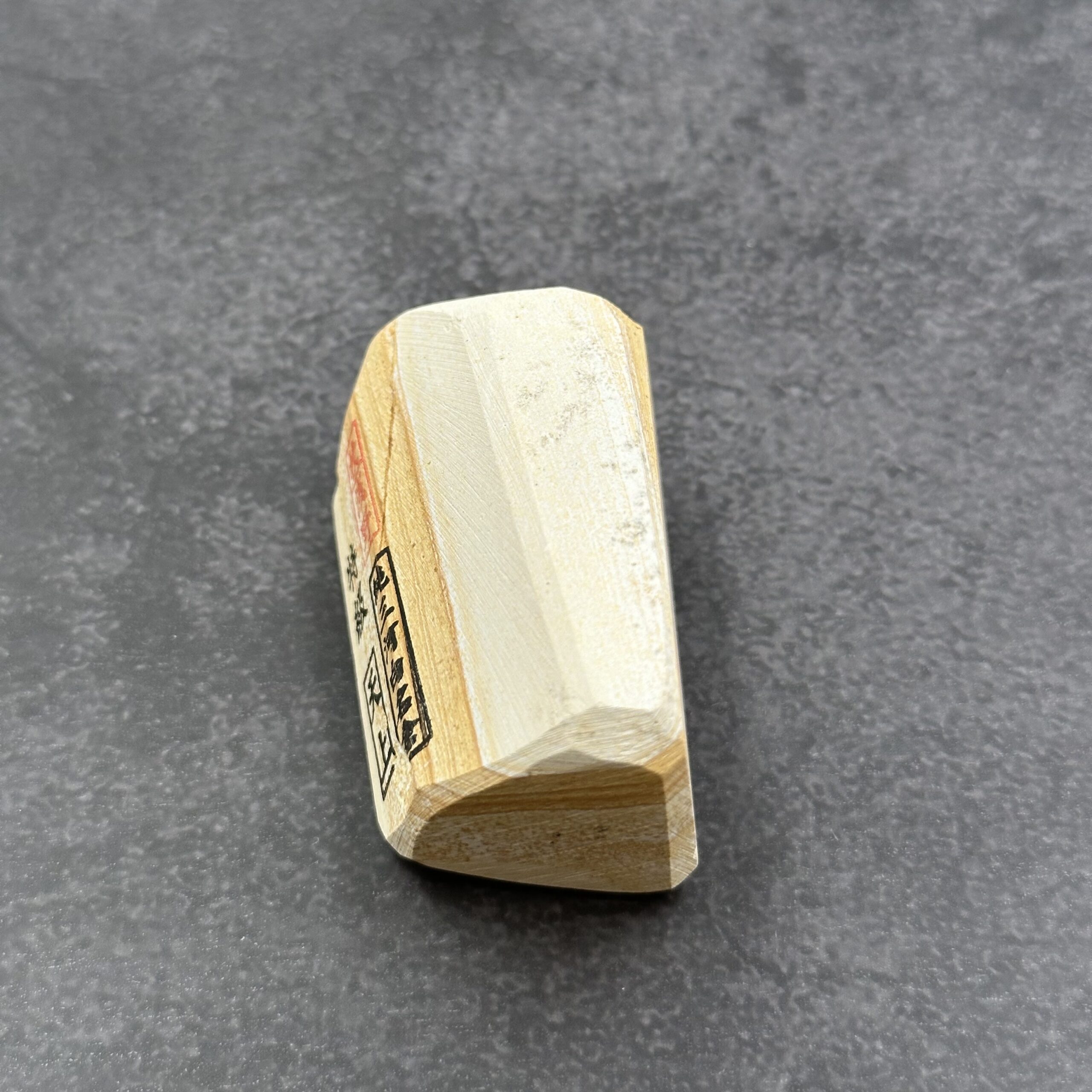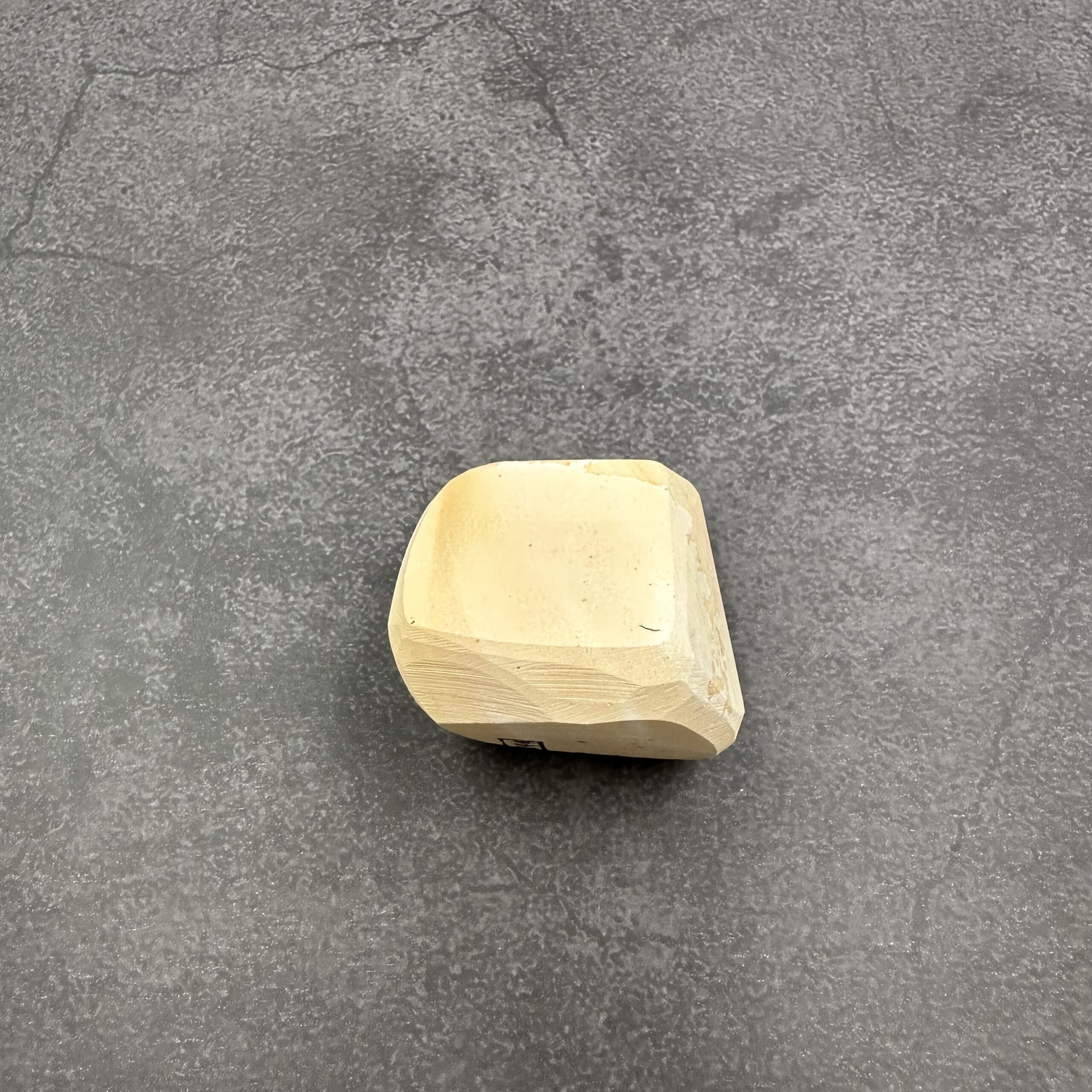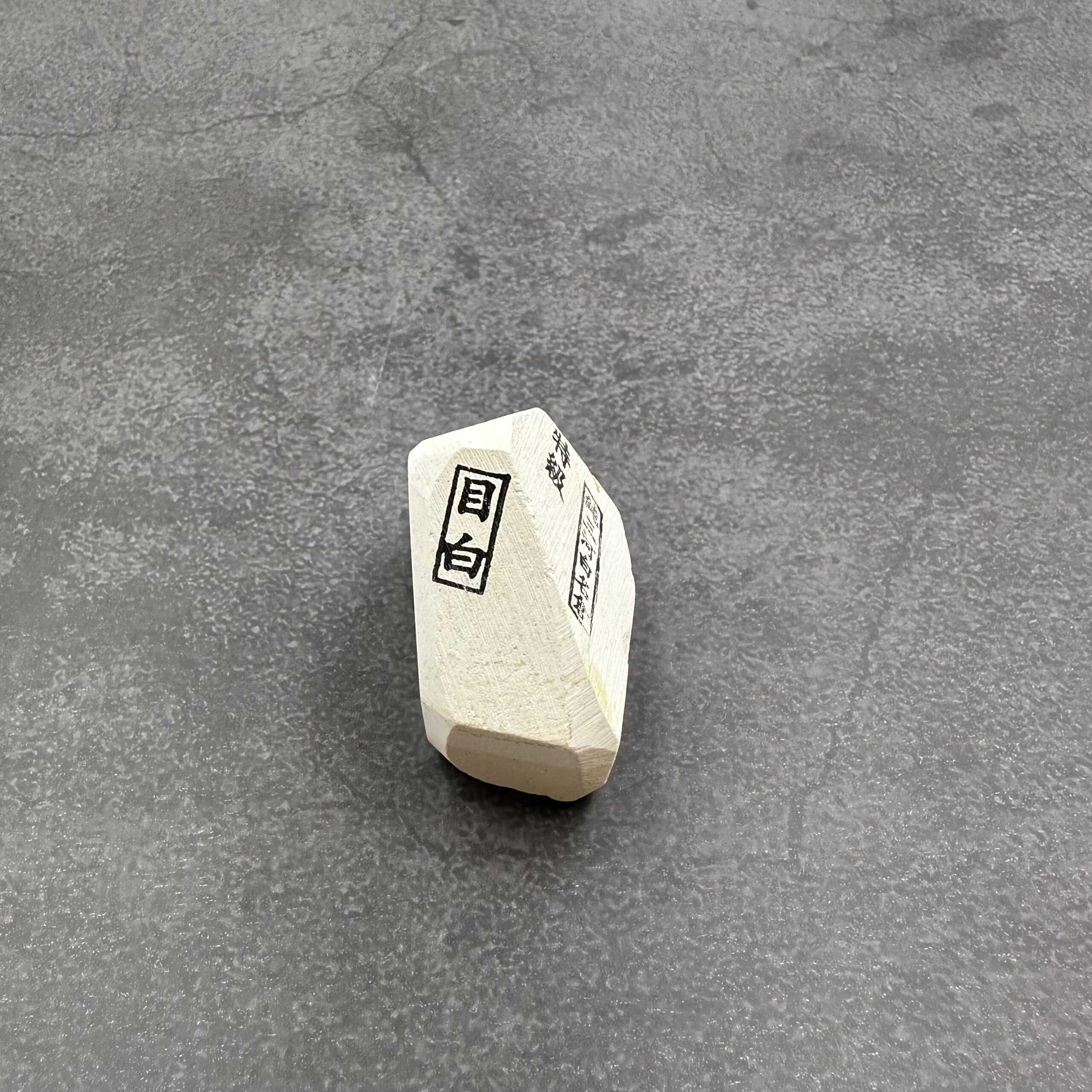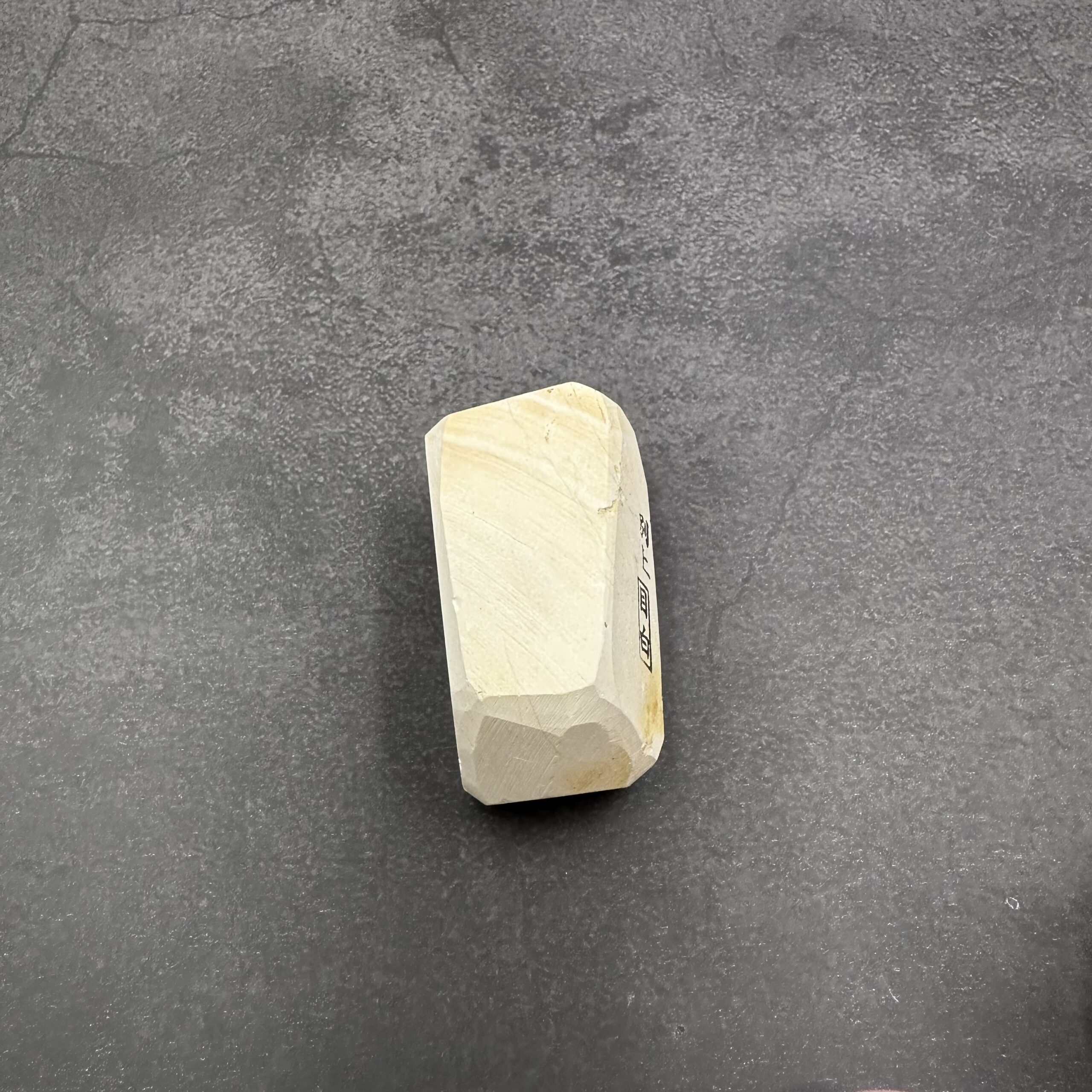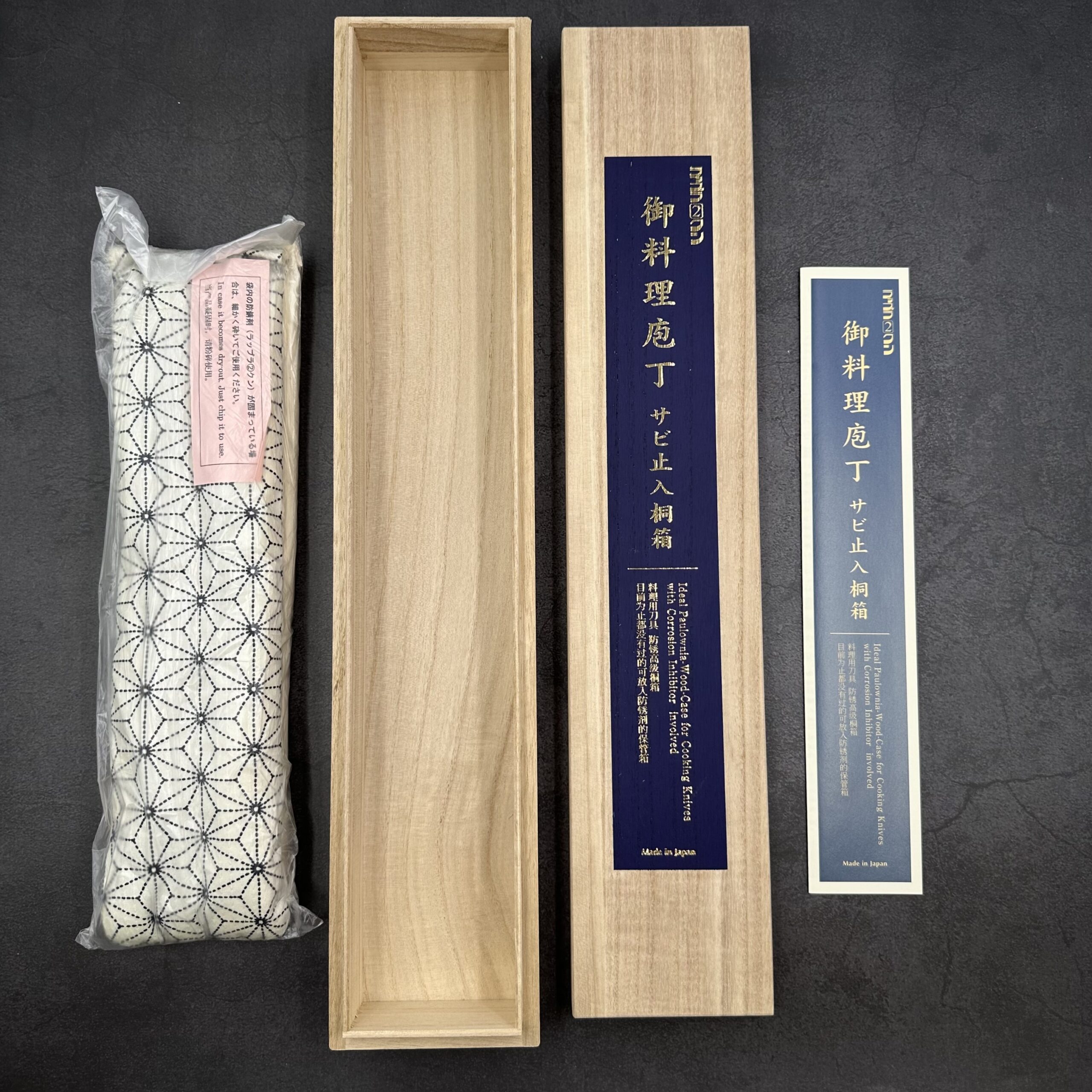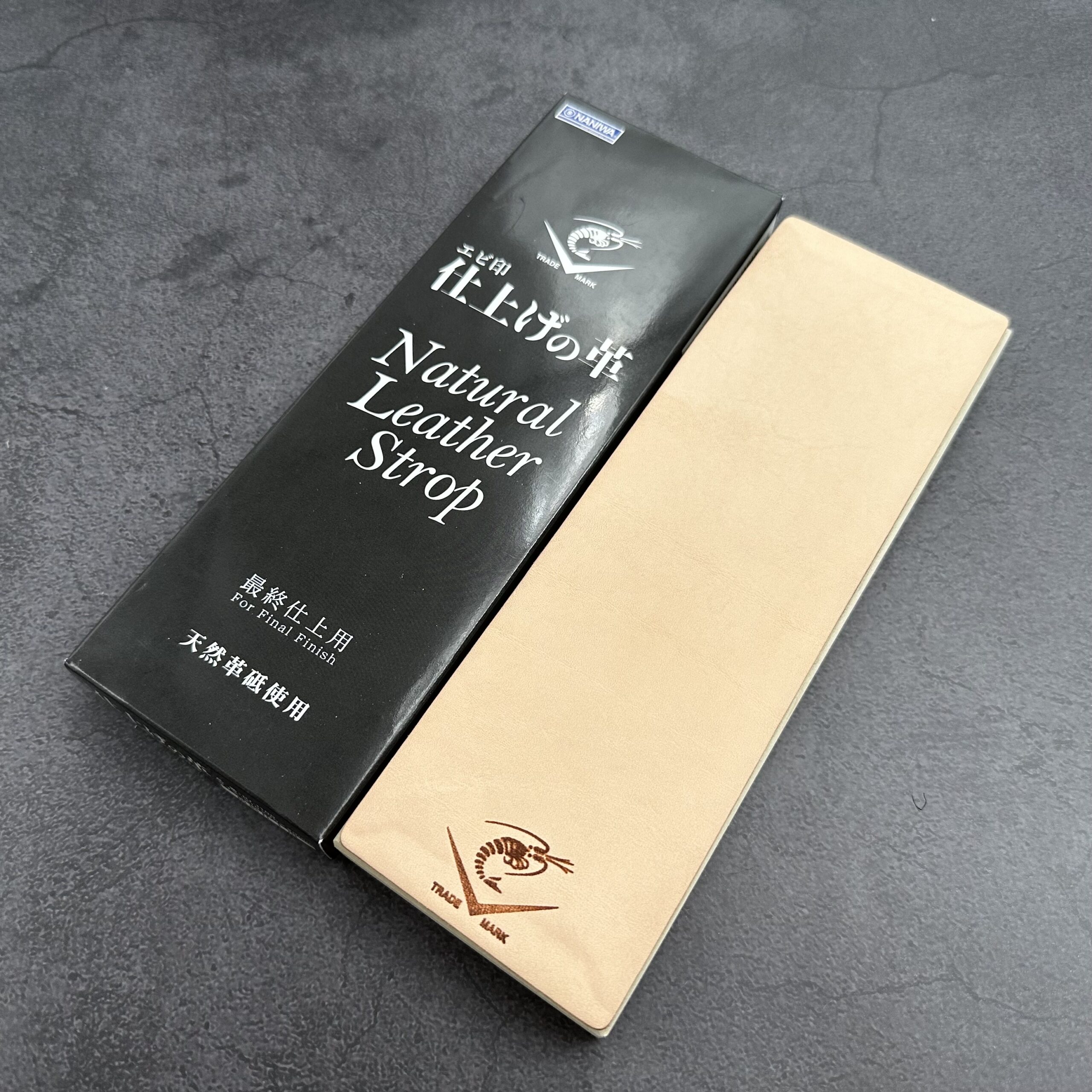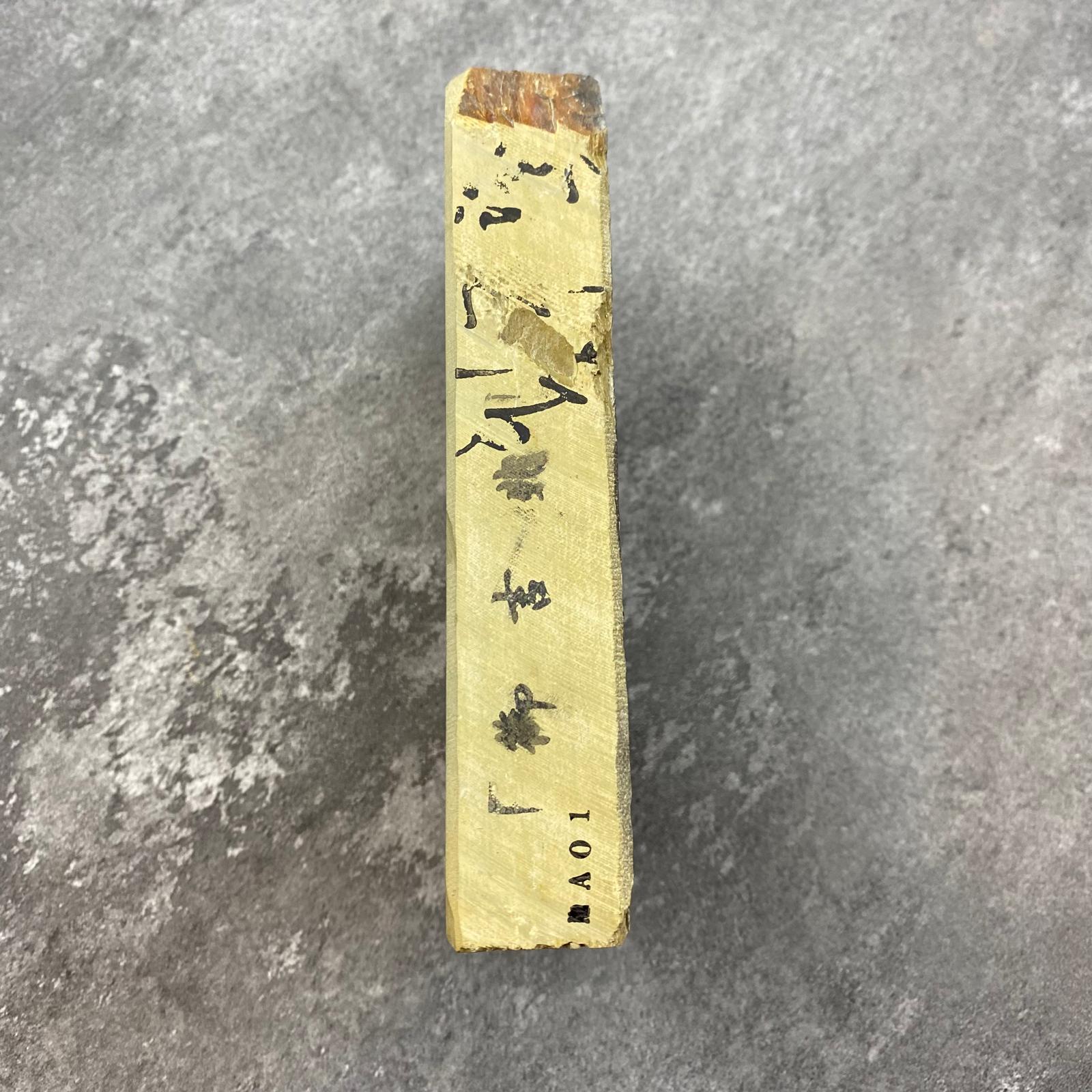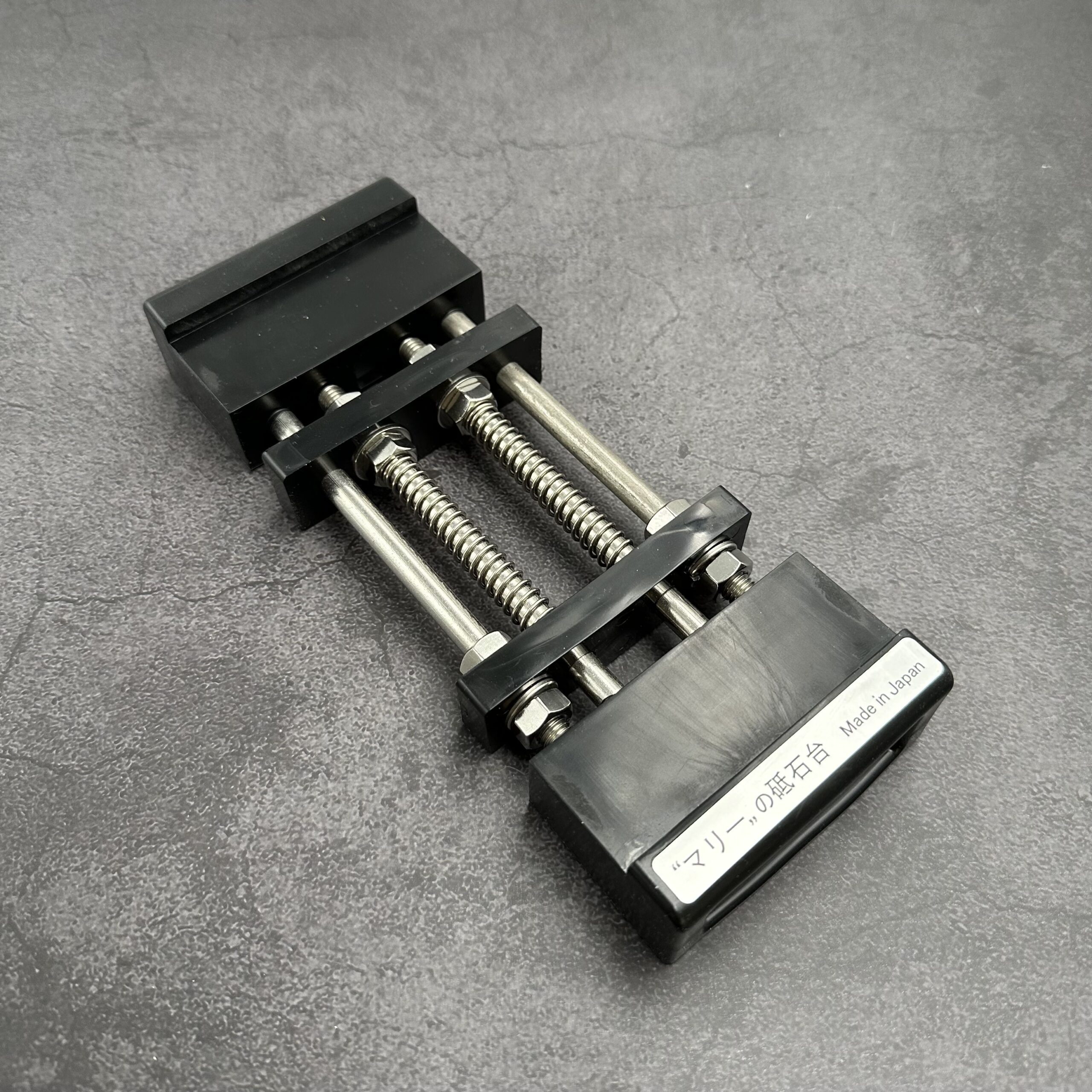=Japanese Whetstones=
Showing 1–12 of 15 results
-
Asano Stamped Mikawa Shiro Nagura “Tokkyu Grade” Tenjyou 66g
CHF32Using Nagura Stones for Whetstone Sharpening
One common technique for using a nagura stone involves selecting a nagura that is softer than the whetstone. When the nagura is rubbed on a wet whetstone, it creates a slurry composed of particles from the nagura mixing with the water on the whetstone’s surface. This method is particularly effective when using a hard whetstone, as it provides a stable working surface that resists dishing out during sharpening. The soft particles from the nagura enhance the sharpening process, and using a series of progressively finer naguras can yield a sharper edge than the whetstone alone, especially for tools like razors. Although this technique also removes some particles from the whetstone, the majority of the slurry comes from the nagura.
Another approach is to use a harder nagura on a softer whetstone. In this case, the slurry primarily consists of particles from the whetstone itself. This method is often employed on very hard whetstones that do not self-slurry—meaning they do not produce a slurry through the friction of the blade alone. However, it can also be used on softer whetstones that do self-slurry to expedite the process. Even with this method, a few particles from the harder nagura will mix into the slurry.
-
Asano Stamped Mikawa Shiro Nagura “Tokkyu Grade” Tenjyou 58g
CHF32Using Nagura Stones for Whetstone Sharpening
One common technique for using a nagura stone involves selecting a nagura that is softer than the whetstone. When the nagura is rubbed on a wet whetstone, it creates a slurry composed of particles from the nagura mixing with the water on the whetstone’s surface. This method is particularly effective when using a hard whetstone, as it provides a stable working surface that resists dishing out during sharpening. The soft particles from the nagura enhance the sharpening process, and using a series of progressively finer naguras can yield a sharper edge than the whetstone alone, especially for tools like razors. Although this technique also removes some particles from the whetstone, the majority of the slurry comes from the nagura.
Another approach is to use a harder nagura on a softer whetstone. In this case, the slurry primarily consists of particles from the whetstone itself. This method is often employed on very hard whetstones that do not self-slurry—meaning they do not produce a slurry through the friction of the blade alone. However, it can also be used on softer whetstones that do self-slurry to expedite the process. Even with this method, a few particles from the harder nagura will mix into the slurry.
-
Asano Stamped Mikawa Shiro Nagura “Tokkyu Grade” Tenjyou 65g
CHF32Using Nagura Stones for Whetstone Sharpening
One common technique for using a nagura stone involves selecting a nagura that is softer than the whetstone. When the nagura is rubbed on a wet whetstone, it creates a slurry composed of particles from the nagura mixing with the water on the whetstone’s surface. This method is particularly effective when using a hard whetstone, as it provides a stable working surface that resists dishing out during sharpening. The soft particles from the nagura enhance the sharpening process, and using a series of progressively finer naguras can yield a sharper edge than the whetstone alone, especially for tools like razors. Although this technique also removes some particles from the whetstone, the majority of the slurry comes from the nagura.
Another approach is to use a harder nagura on a softer whetstone. In this case, the slurry primarily consists of particles from the whetstone itself. This method is often employed on very hard whetstones that do not self-slurry—meaning they do not produce a slurry through the friction of the blade alone. However, it can also be used on softer whetstones that do self-slurry to expedite the process. Even with this method, a few particles from the harder nagura will mix into the slurry.
-
Asano Stamped Mikawa Shiro Nagura “Tokkyu Grade” Mejiro 50g
CHF29Using Nagura Stones for Whetstone Sharpening
One common technique for using a nagura stone involves selecting a nagura that is softer than the whetstone. When the nagura is rubbed on a wet whetstone, it creates a slurry composed of particles from the nagura mixing with the water on the whetstone’s surface. This method is particularly effective when using a hard whetstone, as it provides a stable working surface that resists dishing out during sharpening. The soft particles from the nagura enhance the sharpening process, and using a series of progressively finer naguras can yield a sharper edge than the whetstone alone, especially for tools like razors. Although this technique also removes some particles from the whetstone, the majority of the slurry comes from the nagura.
Another approach is to use a harder nagura on a softer whetstone. In this case, the slurry primarily consists of particles from the whetstone itself. This method is often employed on very hard whetstones that do not self-slurry—meaning they do not produce a slurry through the friction of the blade alone. However, it can also be used on softer whetstones that do self-slurry to expedite the process. Even with this method, a few particles from the harder nagura will mix into the slurry.
-
Asano Stamped Mikawa Shiro Nagura “Betsu Jou Grade” Mejiro 91g
CHF39Using Nagura Stones for Whetstone Sharpening
One common technique for using a nagura stone involves selecting a nagura that is softer than the whetstone. When the nagura is rubbed on a wet whetstone, it creates a slurry composed of particles from the nagura mixing with the water on the whetstone’s surface. This method is particularly effective when using a hard whetstone, as it provides a stable working surface that resists dishing out during sharpening. The soft particles from the nagura enhance the sharpening process, and using a series of progressively finer naguras can yield a sharper edge than the whetstone alone, especially for tools like razors. Although this technique also removes some particles from the whetstone, the majority of the slurry comes from the nagura.
Another approach is to use a harder nagura on a softer whetstone. In this case, the slurry primarily consists of particles from the whetstone itself. This method is often employed on very hard whetstones that do not self-slurry—meaning they do not produce a slurry through the friction of the blade alone. However, it can also be used on softer whetstones that do self-slurry to expedite the process. Even with this method, a few particles from the harder nagura will mix into the slurry.
-
Knife Anti-Rust and Disinfection Paulownia Wooden Box L size
CHF89Size Specifications
Large Size (Max 360mm blade)
- Internal Dimensions: 520mm x 70mm x 40mm
- Weight: 900g
- External Dimensions: 540mm x 90mm x 50mm
-
Knife Anti-Rust and Disinfection Paulownia Wooden Box M size
CHF89Size Specifications
Medium Size (max 300mm blade )
- Internal Dimensions: 440mm x 70mm x 40mm
- Weight: 760g
- External Dimensions: 460mm x 90mm x 50mm
-
Naniwa Natural Leather Strop
CHF29CHF25Smooth Leather Surface
210mm x 70mm x 24mm)
Cushion Layer Under Leather
Non-Skid Pad on Bottom
-
JNAT Aiiwatani Tomae Saijo Lv4.5 Super Final Finishing
CHF259No. A01
Super Final Finishing
Hardness : Lv 4.5
Granularity : Lv 5
Size : 135x80x25mm
Weight : 749g -
Whetstone Holder Plastic resin-Stainless Rod
CHF39CHF29Plastic resin
Stainless RodDoes not include whetstone
-
JNAT Aiiwatani Tomae Saijo Lv4.5 Super Final Finishing
CHF259No. A09
Super Final Finishing
Hardness : Lv 4.5
Granularity : Lv 5
Size : 150x85x25mm
Weight : 795g -
JNAT Aiiwatani Tomae Nashiji Toku sen-hin Lv4 Super Final Finishing
CHF199No. A07
Super Final Finishing
Hardness : Lv 4
Granularity : Lv 5
Size : 135x85x35mm
Weight : 888g


